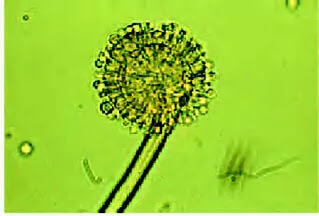MCQ Questions Biological Classification Class 11 Chapter 2
NCERT MCQ Quiz for Class 11 Biology Chapter 2 Biological Classification for NEET | School Exams | Class 11.
Prepare these important MCQ Questions of Class 11 Biology Chapter 2 Biological Classification with Answers, These are Latest questions to expect in NEET | School Exams.
1. Biological classification of plants and animals was first proposed by:
1. Linnaeus
2. Aristotle
3. R.H. Whittaker
4. Theophrastus
2. Choose the correct statement.
1. Aristotle used simple morphological characters to classify animals.
2. Monera have cellulosic cell wall.
3. Loose tissue body organization is seen in kingdom Plantae.
4. In two kingdom classification, kingdoms included all plants and animals.
3. How many main criteria were used by RH whittaker?
a. 3
b. 4
c. 5
d. 6
4. Comma shaped bacteria are called:
1. Bacillus
2. Vibrio
3. Cocci
4. Both 1 and 2
5. Majority of bacteria are:
1. Photosynthetic
2. Chemosynthetic
3. Decomposers
4. Parasitic
6. Which of the following have pigments similar to green plants?
1. Cyanobacteria
2. Euglenoids
3. Fungi
4. Archaebacteria
7. Which of the following are oxidised by chemosynthetic bacteria ?
A. Nitrates
B. Nitrites
C. Ammonia
1. Only B and C
2. A, B, C
3. Only C
4. Only B
8. Choose the incorrect option.
1. Amoboid protozoans are found in moist soil.
2. In diatoms cell walls form two thick overlapping shell which fit together.
3. Dinoflagellates are mostly marine.
4. Dinoflagellates appear yellow, brown and blue.
9. Pigments of which organisms are identical to those of higher plants?
1. Diatoms
2. Slime moulds
3. Cyanobacteria
4. Euglenoids
10. Spores of slime moulds are dispersed by:
1. Water
2. Soil
3. Wind
4. Insects
11. Silica shells are found in:
1. Freshwater amoeba
2. Sporozoans
3. Marine amoeba
4. Ciliates
12. Most notorious sporozoan organism is:
1. Mycoplasma
2. Cyanobacteria
3. Plasmodium
4. Mushroom
13. Which of the following statement is correct?
1. All fungi are filamentous.
2. Fusion of protoplasm is called plamogamy.
3. The network of mycelium is called hyphae.
4. Dikaryotic stage has ploidy (2n).
14. Mushroom and toadstools both have which character in common?
1. Edible fungi
2. Ascomycetes
3. Parasitic fungi
4. Reproduce by fragmentation
15. Ascomycetes are:
1. Coprophilous
2. Decomposers
3. Parasitic
4. All of these
16. Identify the below given fungi

1. Mucor
2. Rhizopus
3. Aspergillus
4. Agaricus
17. In basidiomycetes karyogamy occurs in
1. Basidiocarp
2. Basidium
3. Basidiospore
4. Both 2 and 3
18. Choose the Correct for deuteromycetes:
1. Some members are decomposers or parasite while most are saprophytes.
2. Some members are parasitic or saprophytes while most are decomposers.
3. Some members are parasites while most of them are decomposers or saprophytes.
4. Some members are saprophytes while most are parasitic and decomposers.
19. State true or false:
A. Plantae includes all eukaryotic chlorophyll containing organisms.
B. The viruses are non cellular organisms.
1. T, F
2. F, T
3. T, T
4. F, T
20. The name virus was given by:
1. Ivnowsky
2. Pasteur
3. M.W Biejerinek
4. T.O. Diener